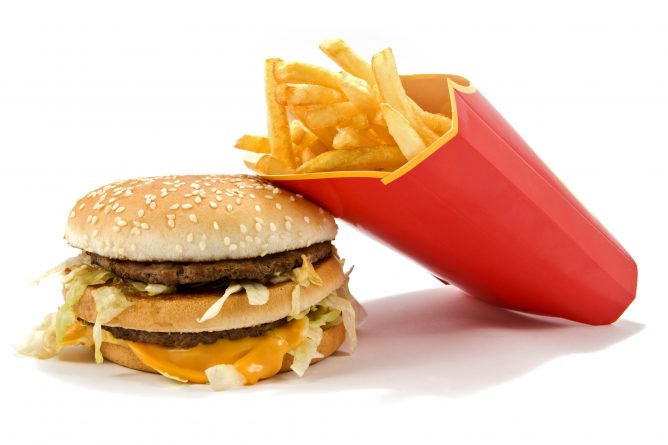…all add up for consumers
By Laura Braddick
“Would you like to make that a combo?”
This refrain oft-recited by fast food cashiers sounds familiar to anyone who’s ever tried to order just a burger.
Perhaps they always pose this question because we consumers are likely to take up the deal if it’s offered.
In a recent study, marketing professors Veronica Thomas and Judy Harris found consumers order more calories and are more likely to bundle when a bundle promotion is advertised on a menu in a fast food setting.
In their study, a group of 191 participants was asked to assume they had gone to a fast food restaurant for lunch and were shown a menu board for a fake restaurant. They were then asked what they would be most likely to order. About half of the participants saw a menu board featuring regular menu items in addition to combo meals while the other half saw a menu without any bundle promotions.
Banning supersized options or the sale of large sugary beverages may remove the option for consumers to purchase a particular item, but may do little to decrease over-consumption.
Participants who saw the menu with bundles ordered more calories than the other group.
By offering combo meals, the restaurant is suggesting that the items should all be purchased together and is an appropriate meal choice. In other words, consumers see an advertised bundle and take the cue that that is an appropriate meal since it’s being offered that way.
The study also measured participants’ level of knowledge about calories and dietary consumption with questions such as “Of the following choices, which food has the fewest calories?” Through these measures, the professors found the lower a person’s knowledge about calories, the higher the calorie count of the order was.
With obesity rates on the rise across the country for several consecutive years, policy makers and advocates have been clamoring for ways to reduce this troubling growth. Public health advocates have suggested and implemented an array of solutions from requiring fast food restaurants to displaying calorie information next to menu items, reducing portion sizes and taxing things like sugary drinks.
But the study posed by Harris and Thomas challenge some of these strategies.
“Our research calls into question the efficacy of focusing on item size as a way to promote smart food choices,” Harris and Thomas write in their paper. “Banning supersized options or the sale of large sugary beverages may remove the option for consumers to purchase a particular item, but may do little to decrease overconsumption given the ubiquity of the combo meal.”
Moreover, displaying calorie information on menus might not be enough to offset the environmental cue that bundles present to consumers, the professors suggest, underscoring the importance of educating the public about healthy eating habits and appropriate caloric intake.
“While consumers who have low caloric knowledge are most likely to be affected by the promotion of a bundle, increased educational efforts can help to reverse this effect.”
Harris and Thomas’ paper was published in The Journal of Consumer Affairs this past summer. Thomas is an assistant professor of marketing whose research interests include relationship marketing, social influence and branding. Harris is a professor of marketing and associate dean of the College of Business and Economics.



